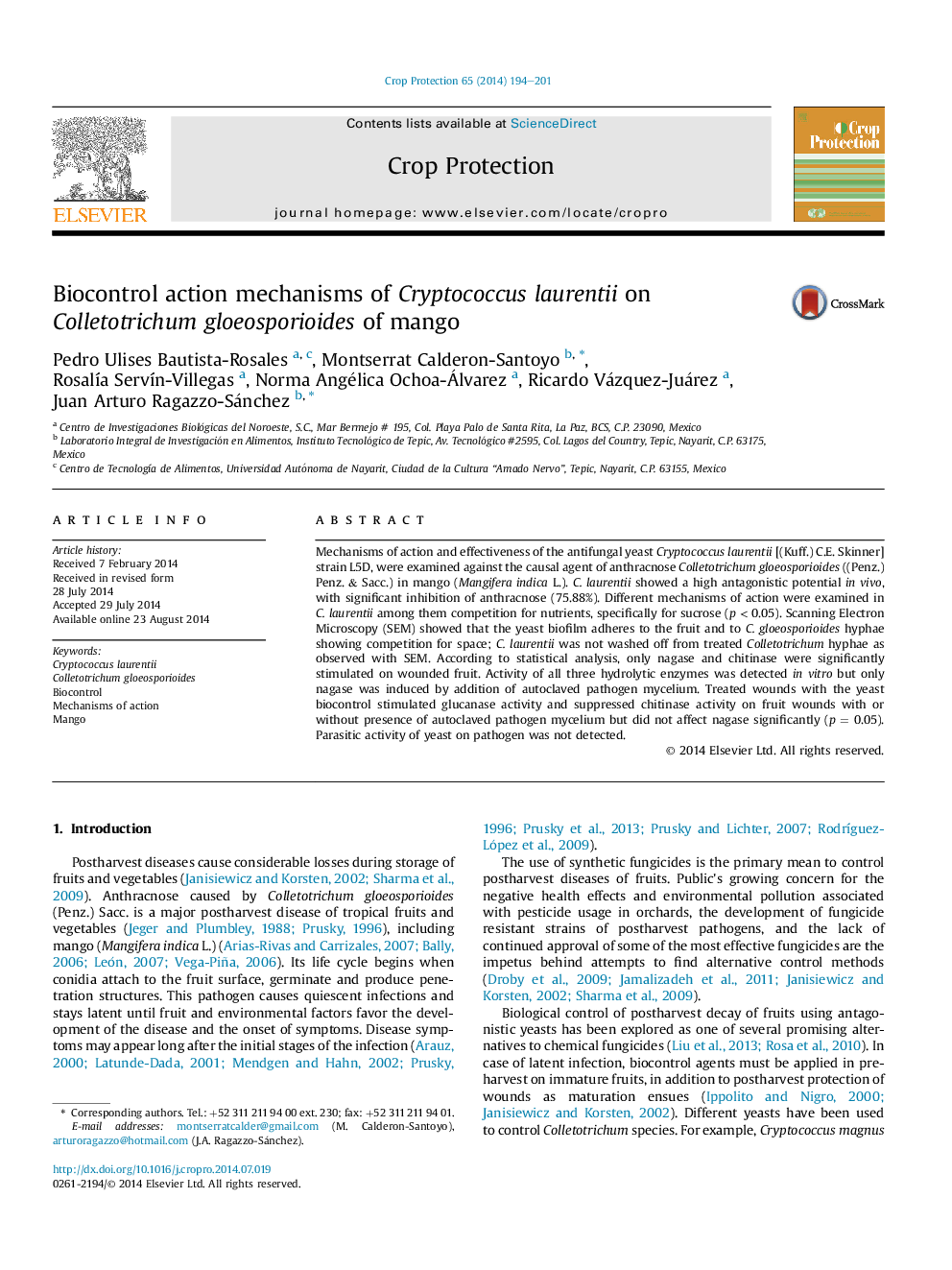| Article ID | Journal | Published Year | Pages | File Type |
|---|---|---|---|---|
| 4505824 | Crop Protection | 2014 | 8 Pages |
•Cryptococcus laurentii is capable of reducing anthracnose disease incidence and/or severity.•The yeast showed different action mechanisms in the managing of Colletotrichum gloeosporioides.•Actively growing yeast cells are required for effective biocontrol of fruit rot.
Mechanisms of action and effectiveness of the antifungal yeast Cryptococcus laurentii [(Kuff.) C.E. Skinner] strain L5D, were examined against the causal agent of anthracnose Colletotrichum gloeosporioides ((Penz.) Penz. & Sacc.) in mango (Mangifera indica L.). C. laurentii showed a high antagonistic potential in vivo, with significant inhibition of anthracnose (75.88%). Different mechanisms of action were examined in C. laurentii among them competition for nutrients, specifically for sucrose (p < 0.05). Scanning Electron Microscopy (SEM) showed that the yeast biofilm adheres to the fruit and to C. gloeosporioides hyphae showing competition for space; C. laurentii was not washed off from treated Colletotrichum hyphae as observed with SEM. According to statistical analysis, only nagase and chitinase were significantly stimulated on wounded fruit. Activity of all three hydrolytic enzymes was detected in vitro but only nagase was induced by addition of autoclaved pathogen mycelium. Treated wounds with the yeast biocontrol stimulated glucanase activity and suppressed chitinase activity on fruit wounds with or without presence of autoclaved pathogen mycelium but did not affect nagase significantly (p = 0.05). Parasitic activity of yeast on pathogen was not detected.
